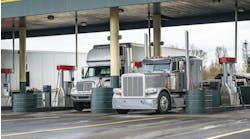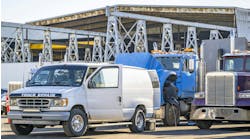Technology is changing everything in our jobs and our everyday lives. When it comes to the trucking industry, truck technology has led to greater safety for the driver and the public at large.
Technology such as lane-departure warning, collision mitigation systems, and automatic emergency braking, among others, is expensive (though many newer trucks are already installed with many of these safety improvements). Repairs for this technology are likely higher than for trucks without it. But focusing on the immediate costs is short-sighted. When you consider soaring insurance rates and nuclear verdicts, investment in safety technology (and safer drivers) will more than pay for itself.
Indeed, technology won’t prevent every accident or crash, as is evidenced by crashes and pileups on highways due to dust, ice, and snowstorms. But most accidents and crashes aren’t caused by disastrous weather conditions. According to the National Highway Traffic Safety Administration, only 21% of highway crashes are caused by bad weather. That still leaves 79% that occur on roads that should be easy to maneuver. So, anything that can make your trucks and drivers safer is something you should be considering.
See also: Using safety technology to achieve operational excellence
Safety first
Fleets fully understand why the statement “safety first” is so essential… and why fleets back up these words with actions. According to the National Private Truck Council in a 2021 benchmark report (which actually reports on key metrics from 2020), “Private fleets are major adopters of safety technologies, with significant gains this year in areas such as in-cab cameras, adaptive cruise control, and advanced driver assistance systems like collision warning and lane departure warning.”
These safety improvements do what they are supposed to do: help reduce accidents and injuries. A 2021 Bosch Research study found that “injuries in truck crashes were potentially reduced by nearly a quarter (23%) if the truck triggered the accident.” Data from the Insurance Institute for Highway Safety stated that fleets can reduce front-end commercial vehicle accidents by 44% by adding forward collision mitigation technology.
Three steps to optimize safety technology
For technology to succeed, you need to ensure several steps are followed:
- Buy-in: Like any other business investment, success depends upon leadership within the organization, fully backing the initiative and communicating that to the workforce. But once you have that buy-in, you need to get that same agreement from every stakeholder, including drivers. That means explaining why the fleet implements this technology and how everyone will benefit. It’s also vital to have a company culture that embraces safety.
- Vehicle maintenance: If you invest in technology thinking it will take care of itself, you’ll soon see problems. Vehicles must be maintained regardless of how much technology is built in or put in. The best way to keep your vehicles safe and road-ready is to make sure to conduct regular preventive maintenance on every truck in your fleet. In addition, it’s important to note that preventive maintenance is not a one-size-fits-all practice. You also need ongoing training to ensure every technician in your workforce is up-to-date on maintaining technology, including the changes that may occur after updates.
- Driver training: Regulations change, truck technology changes, but the drivers remain the same. Fleet managers must have ongoing conversations, meetings, and training sessions with their drivers, ensuring they are up-to-date and committed to compliance. Safety should be stressed constantly, but new technologies introduce complexities that many drivers may not be familiar with.
Optimizing truck technology to ensure safety is an all-hands-on-deck reality. From company leaders to shift managers to technicians to drivers, everyone has an important role to play. Technology is not going away. Fleets that learn how to utilize this technology best will have a competitive advantage.
Jane Clark is senior vice president of operations for NationaLease. In this position, she is focused on managing the member services operation as well as working to strengthen member relationships, reduce member costs, and improve collaboration within the NationaLease supporting groups. Prior to joining NationaLease, Clark served as area vice president for Randstad, one of the nation’s largest recruitment agencies, and before that, she served in management posts with QPS Cos., Pro Staff, and Manpower Inc.



